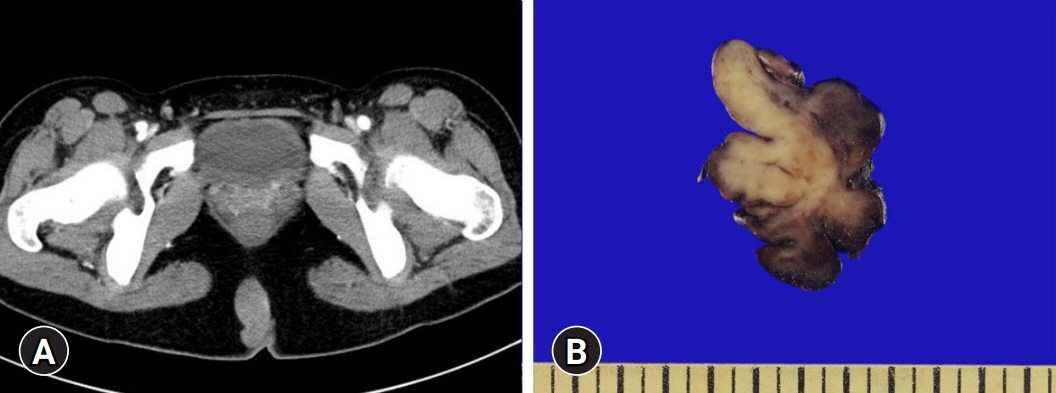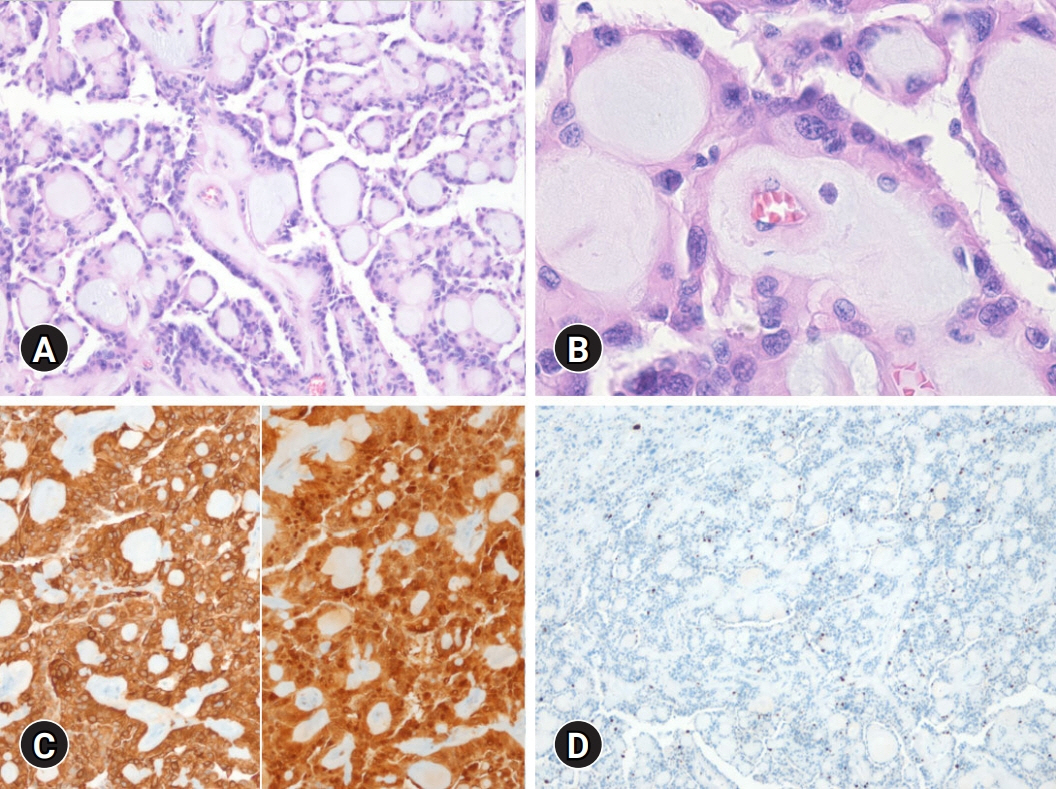J Yeungnam Med Sci.
2023 Oct;40(4):454-456. 10.12701/jyms.2022.00367.
Extraspinal sacrococcygeal myxopapillary ependymoma in a teenager
- Affiliations
-
- 1Department of Pathology, Yeungnam University College of Medicine, Daegu, Korea
- KMID: 2547373
- DOI: http://doi.org/10.12701/jyms.2022.00367
Figure
Reference
-
References
1. Mallory FB. Three gliomata of ependymal origin; two in the fourth ventricle, one subcutaneous over the coccyx. J Med Res. 1902; 8:1–10. 1.2. Fabozzi F, Ceccanti S, Cacchione A, Colafati GS, Carai A, Crocoli A, et al. Pediatric extraspinal sacrococcygeal ependymoma: report of two cases and literature review. Diagnostics (Basel). 2021; 11:1680.
Article3. Kelly A, Nally D, Crowther S, Kavanagh D. Subcutaneous sacrococcygeal myxopapillary ependymoma misdiagnosed as pilonidal disease. BMJ Case Rep. 2020; 13:e231639.
Article4. McEachron KR, Gaertner WB. Extradural sacrococcygeal subcutaneous ependymoma misdiagnosed as pilonidal disease: case report and review of the literature. J Surg Case Rep. 2016; 2016:rjw121.
Article5. WHO Classification of Tumours Editorial Board. Central nervous system tumors. WHO Classification of Tumours, 5th ed. Lyon: International Agency for Research on Cancer;2021.
- Full Text Links
- Actions
-
Cited
- CITED
-
- Close
- Share
- Similar articles
-
- A Case of Subcutaneous Sacrococcygeal Myxopapillary Ependymoma: A Case Report
- A Case of Myxopapillary Ependymoma in the Cauda Equina: Case Report
- A Case of Myxopapillary Ependymoma
- Primary Intradural Extramedullary Myxopapillary Ependymoma
- Myxopapillary Ependymoma of the Cauda Equina in a 5-Year-Old Boy



